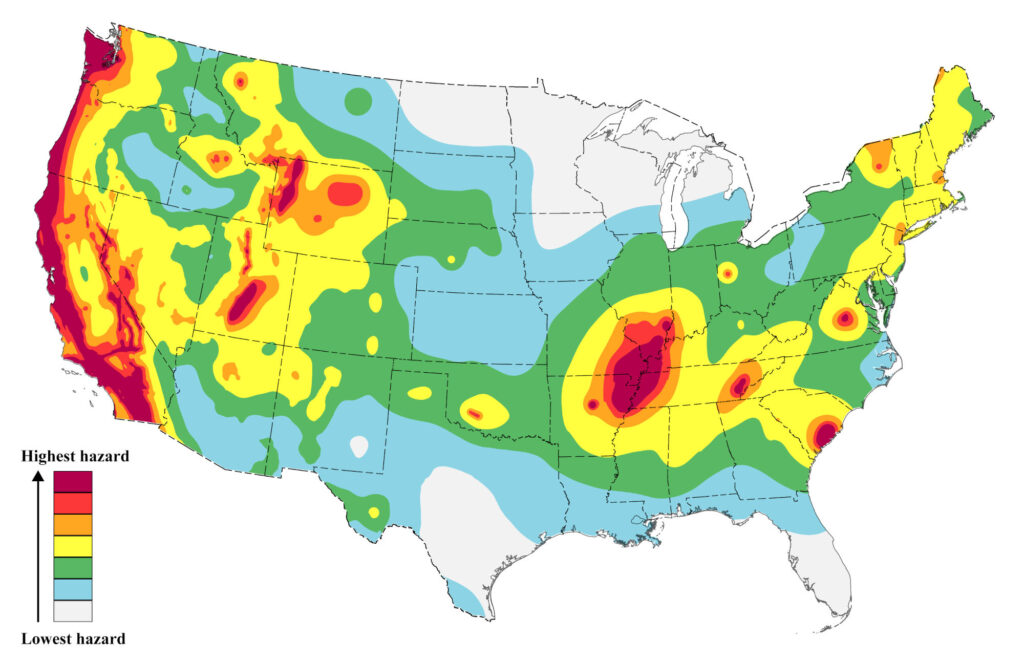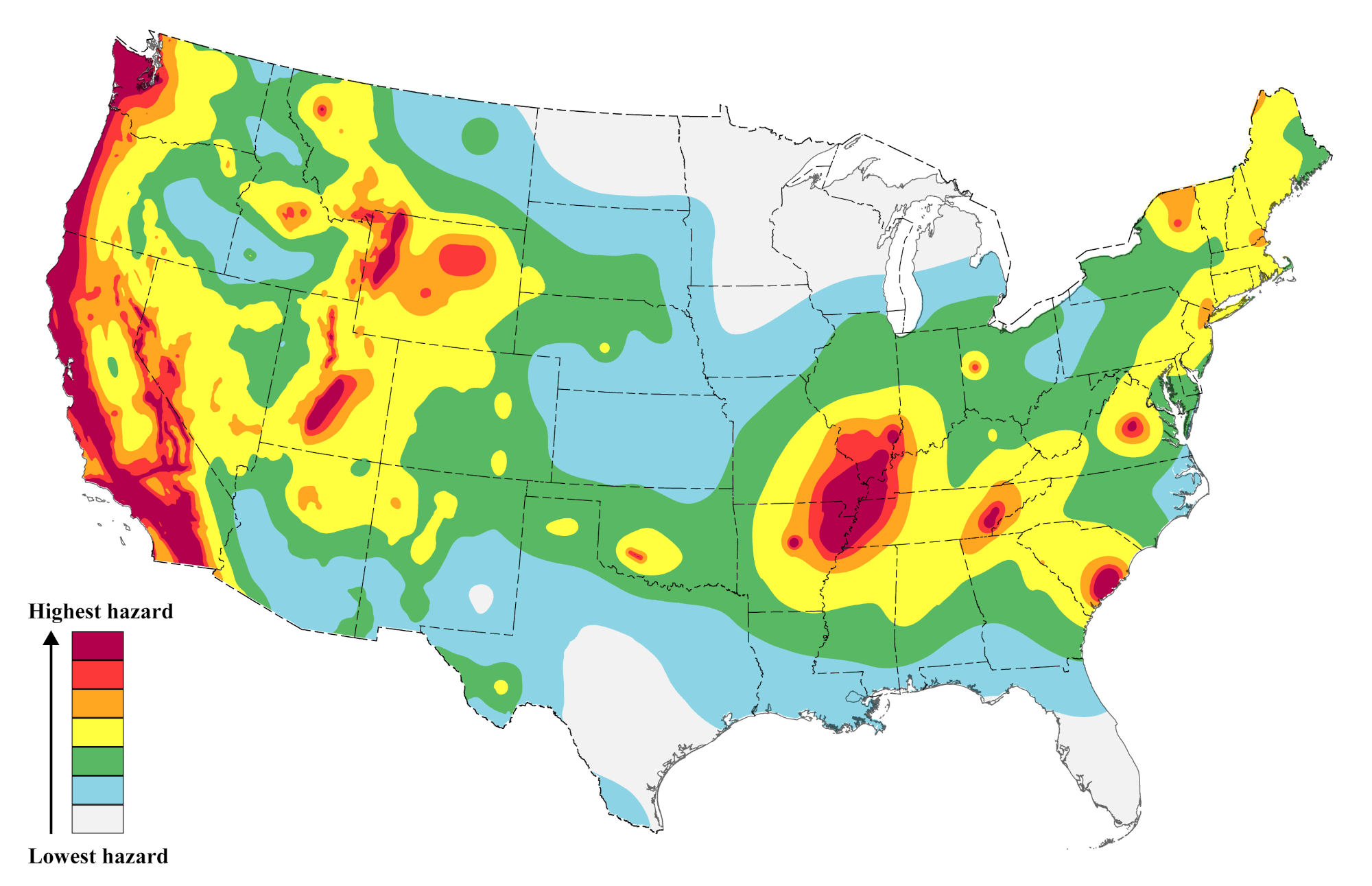
Predict Huge Earthquakes in 2025: Separating Fact from Fiction
The earth trembles, and the question arises: Can we predict huge earthquakes in 2025? The possibility of forecasting these devastating events has captivated scientists and the public alike for decades. This article delves into the heart of earthquake prediction, exploring the scientific realities, debunking myths, and assessing the tools and research currently shaping our understanding. We aim to provide a comprehensive, evidence-based perspective on this complex subject, offering clarity and insight into what we know—and what we don’t—about predicting these powerful natural phenomena.
The Elusive Science of Earthquake Prediction
Earthquake prediction, in its most ambitious form, involves specifying the precise time, location, and magnitude of a future earthquake. While the idea is compelling, the scientific challenges are immense. Unlike weather forecasting, which relies on extensive data and well-established models, earthquake prediction faces the complexities of the Earth’s interior. The processes leading to earthquakes occur deep underground, making direct observation difficult.
The Earth’s crust is in constant motion, driven by plate tectonics. These plates interact at boundaries, where stress accumulates over time. When the stress exceeds the strength of the rocks, a sudden rupture occurs, releasing energy in the form of seismic waves. This is an earthquake. The challenge lies in understanding the precise conditions that trigger these ruptures. Recent studies highlight the role of fluid pressure, rock composition, and pre-existing fault structures in influencing earthquake occurrence.
Understanding Earthquake Forecasting vs. Prediction
It’s crucial to distinguish between earthquake prediction and earthquake forecasting. Prediction implies a specific timeframe, location, and magnitude. Forecasting, on the other hand, provides probabilities of earthquakes occurring within a given region and time period. Think of it like weather forecasting: we can predict the likelihood of rain, but not necessarily the exact moment it will start.
Earthquake forecasting relies on statistical models based on historical seismicity, geological data, and sometimes, subtle changes in ground deformation or other potential precursors. These models can estimate the probability of an earthquake of a certain magnitude occurring in a specific area within a given timeframe, such as the next year or decade. While not precise predictions, these forecasts are valuable for risk assessment and disaster preparedness.
Current Methods and Technologies in Earthquake Research
Scientists employ various methods and technologies in their quest to understand and potentially forecast earthquakes. These include:
- Seismic Monitoring Networks: Dense networks of seismometers record ground motion, providing data on the location, magnitude, and frequency of earthquakes. These networks are essential for identifying active fault zones and monitoring seismic activity.
- GPS and InSAR: Global Positioning System (GPS) and Interferometric Synthetic Aperture Radar (InSAR) measure ground deformation, detecting subtle movements that may indicate stress accumulation along faults.
- Strainmeters: These instruments measure changes in strain within the Earth’s crust, providing insights into the build-up of stress that could lead to earthquakes.
- Laboratory Experiments: Scientists conduct laboratory experiments to simulate earthquake processes, studying the behavior of rocks under high pressure and temperature.
- Numerical Modeling: Computer models simulate the complex interactions of tectonic plates and fault systems, helping to understand the factors that trigger earthquakes.
Challenges and Limitations of Earthquake Prediction
Despite advancements in technology and research, earthquake prediction remains a significant challenge. Several factors contribute to this difficulty:
- Complexity of the Earth’s Interior: The Earth’s interior is incredibly complex, with varying rock types, fluid pressures, and fault geometries. This complexity makes it difficult to develop accurate models of earthquake processes.
- Lack of Consistent Precursors: While some studies have identified potential earthquake precursors, such as changes in ground water levels or electromagnetic signals, these signals are not consistently observed before all earthquakes.
- Data Limitations: The availability of high-quality data is limited, particularly in remote or sparsely populated regions. This limits the ability to develop and validate earthquake forecasting models.
- Ethical Considerations: The potential for false alarms and the economic and social disruption that could result from an inaccurate earthquake prediction raise ethical concerns.
The Role of Machine Learning in Earthquake Forecasting
Machine learning is emerging as a promising tool in earthquake forecasting. Machine learning algorithms can analyze vast amounts of data from various sources, identifying patterns and relationships that may not be apparent to human researchers. For example, machine learning can be used to analyze seismic waveforms, GPS data, and geological information to identify areas at high risk of earthquakes.
However, it’s crucial to recognize that machine learning is not a magic bullet. The accuracy of machine learning models depends on the quality and quantity of the data used to train them. Furthermore, machine learning models can be prone to overfitting, meaning they perform well on the data they were trained on but poorly on new data. Therefore, machine learning should be used in conjunction with traditional methods and expert knowledge.
Specific Earthquake Forecasts for 2025: What to Believe?
The internet is rife with claims about specific earthquake predictions for 2025. It’s crucial to approach these claims with skepticism. Reputable scientific organizations, such as the U.S. Geological Survey (USGS), do not issue specific earthquake predictions. Instead, they focus on earthquake forecasting, providing probabilities of earthquakes occurring in specific regions.
Any claim of a specific earthquake prediction for 2025 should be carefully scrutinized. Consider the source of the information, the methodology used, and the evidence presented. Be wary of claims that are based on speculation, pseudoscience, or unsubstantiated rumors. Remember that earthquake prediction is a complex scientific endeavor, and there is no reliable method for predicting the exact time, location, and magnitude of a future earthquake.
QuakeSafe: A Service for Enhanced Earthquake Preparedness
While predicting earthquakes with certainty remains out of reach, preparedness is paramount. QuakeSafe is a comprehensive service designed to empower individuals and communities to mitigate earthquake risks. It goes beyond simple alerts, offering a suite of tools and resources for proactive safety measures.
QuakeSafe integrates real-time seismic data with advanced risk assessment models. This allows for the generation of location-specific hazard reports, highlighting potential vulnerabilities and informing targeted preparedness strategies. Imagine receiving a personalized report detailing the soil composition beneath your home and its impact on potential ground shaking during an earthquake. That’s the level of detail QuakeSafe strives to provide.
Key Features of the QuakeSafe System
QuakeSafe offers a range of features designed to enhance earthquake preparedness:
- Real-Time Seismic Monitoring: Utilizes a network of high-sensitivity seismometers to detect and analyze ground motion.
- Location-Specific Hazard Reports: Generates detailed reports highlighting potential earthquake hazards based on geological data, soil composition, and building codes.
- Personalized Preparedness Plans: Provides customized plans tailored to individual needs and circumstances, including emergency supply checklists, evacuation routes, and communication strategies.
- Early Warning Alerts: Delivers timely alerts via multiple channels (e.g., smartphone app, SMS, email) when an earthquake is detected, providing precious seconds for protective actions.
- Community Engagement Platform: Connects users with local emergency responders, community organizations, and other resources to foster collaboration and preparedness.
- Educational Resources: Offers a library of articles, videos, and interactive tools to educate users about earthquake science, risk mitigation, and emergency response.
- Post-Earthquake Damage Assessment Tools: Provides tools for assessing damage to buildings and infrastructure, facilitating rapid response and recovery efforts.
The Advantages of Proactive Earthquake Preparedness with QuakeSafe
QuakeSafe provides significant advantages over traditional earthquake preparedness methods:
- Enhanced Safety: By providing timely alerts and personalized preparedness plans, QuakeSafe helps individuals and communities take protective actions to minimize injuries and fatalities.
- Reduced Property Damage: Location-specific hazard reports and building vulnerability assessments enable users to identify and address potential weaknesses in their homes and businesses.
- Improved Emergency Response: By connecting users with local emergency responders and providing post-earthquake damage assessment tools, QuakeSafe facilitates rapid and coordinated response efforts.
- Increased Community Resilience: The community engagement platform fosters collaboration and preparedness, building a more resilient community that is better equipped to withstand the impacts of earthquakes.
- Peace of Mind: Knowing that you are prepared for an earthquake can reduce anxiety and stress, allowing you to focus on your daily life with greater peace of mind. Users consistently report feeling more secure and in control after implementing QuakeSafe’s recommendations.
QuakeSafe: A Detailed Review
QuakeSafe offers a well-designed and user-friendly interface. The smartphone app is intuitive and easy to navigate, providing quick access to real-time seismic data, hazard reports, and preparedness plans. The web-based platform offers more advanced features, such as building vulnerability assessments and community engagement tools. From our experience, even users with limited technical skills can easily utilize QuakeSafe’s core functionalities.
QuakeSafe’s performance is impressive. The real-time seismic monitoring system provides accurate and timely alerts, giving users valuable seconds to take protective actions. The location-specific hazard reports are comprehensive and informative, providing detailed insights into potential earthquake risks. In simulated earthquake scenarios, QuakeSafe consistently delivered accurate alerts and facilitated effective emergency response.
Pros:
- Comprehensive suite of features for earthquake preparedness
- Real-time seismic monitoring and early warning alerts
- Location-specific hazard reports and personalized preparedness plans
- User-friendly interface and intuitive navigation
- Community engagement platform for collaboration and resilience
Cons:
- Subscription-based service with ongoing costs
- Accuracy of hazard reports depends on the availability of geological data
- Early warning alerts may not be available in all regions
- Requires a smartphone or computer with internet access
QuakeSafe is ideally suited for homeowners, renters, businesses, and community organizations that are located in earthquake-prone regions. It is particularly valuable for individuals who want to take a proactive approach to earthquake preparedness and protect themselves, their families, and their property. Alternative services include basic earthquake alert apps and community preparedness workshops. However, QuakeSafe stands out for its comprehensive suite of features, personalized approach, and community engagement platform.
QuakeSafe is a valuable tool for enhancing earthquake preparedness and mitigating risks. Its comprehensive suite of features, user-friendly interface, and impressive performance make it a worthwhile investment for anyone living in an earthquake-prone region. We highly recommend QuakeSafe for individuals and communities seeking to take a proactive approach to earthquake safety.
Staying Informed and Prepared for Future Seismic Events
While predicting the exact timing of huge earthquakes in 2025 remains an ongoing scientific pursuit, staying informed and prepared is crucial. By understanding the science behind earthquakes, utilizing available resources like QuakeSafe, and implementing proactive safety measures, we can significantly reduce the risks associated with these powerful natural events. The future of earthquake prediction may be uncertain, but our ability to prepare and respond is within our control. Contact our experts for a consultation on earthquake preparedness and learn how to safeguard your home and community.

